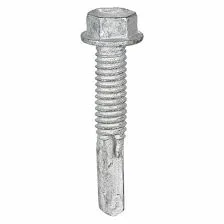concrete footing bolts
Understanding Concrete Footing Bolts Essential Components for Structural Stability
Concrete footings are critical elements in the construction of buildings and other structures, providing a stable base that supports the weight and loads above. Among the various components that contribute to the strength and durability of concrete footings, bolts play a vital role. This article delves into the significance of concrete footing bolts, their types, installation methods, and best practices to ensure structural integrity.
The Importance of Concrete Footing Bolts
Concrete footing bolts are used to anchor structural components, such as walls, columns, and frames, securely to concrete foundations. They work by transferring loads from the structure into the footing and ultimately into the ground below. Proper use of footing bolts helps to prevent movement caused by wind, seismic activity, or changes in thermal conditions, ensuring the overall stability of a building.
Types of Concrete Footing Bolts
There are several types of footing bolts, each designed for specific applications. The most common types include
1. J-Bolts Shaped like a J, these bolts are typically embedded in the concrete while it is still wet. The curved end of the bolt provides a superior anchor point that resists pulling out, making J-bolts ideal for securing wooden sill plates or metal framing to concrete footings.
2. L-Bolts Similar to J-bolts, L-bolts have a straight shaft with a bend at one end that keeps the bolt anchored within the concrete. These are equally effective for anchoring various structural components and are often used in similar applications as J-bolts.
3. Expansion Anchors These bolts are installed into pre-drilled holes in cured concrete. As the bolt is tightened, the cone-shaped end expands, creating a secure attachment point. Expansion anchors are useful for retrofit applications where the footing is already in place.
4. Epoxy Anchors This type involves using a bonding agent (epoxy) to secure a bolt in a drilled hole. This method offers high tensile strength and is highly effective for heavy loads. Epoxy anchors are particularly useful for applications where traditional anchoring methods may not suffice.
Installation Methods
The installation of concrete footing bolts involves several important steps
concrete footing bolts

1. Planning Start with a precise plan, including the placement and spacing of the bolts. This is critical to ensure that the structural loads are evenly distributed and that construction meets building codes.
2. Placement During the concrete pour, place the bolts in the designated positions. Ensure that they are aligned correctly and the proper depth is maintained for effective anchoring.
3. Consultation Always consult structural engineers to ensure that the chosen type of bolt and its installation meet the specific requirements of the structure being built.
4. Concrete Curing Allow ample time for the concrete to cure and achieve its intended strength before applying loads to the bolts.
Best Practices for Footing Bolts
- Regular Inspections Inspect footing bolts periodically, especially in older structures. Look for signs of corrosion or loosening, as these may indicate potential issues with the stability of the structure.
- Maintenance Apply protective coatings to prevent rust or corrosion, particularly in regions exposed to moisture or corrosive environments.
- Follow Building Codes Always adhere to local building codes and regulations to ensure safety and compliance. Each jurisdiction may have different requirements regarding the size, type, and installation of concrete footing bolts.
- Quality Materials Use high-quality, corrosion-resistant materials such as stainless steel or galvanized steel for bolting applications. This ensures longevity and reduces the risk of failure over time.
Conclusion
Concrete footing bolts are an essential aspect of building robust and resilient structures. By understanding their types, installation procedures, and maintenance best practices, builders and homeowners can significantly enhance the safety and stability of their constructions. Whether designing a new structure or maintaining an existing one, proper attention to footing bolts will yield lasting benefits in both performance and safety.
-
Weatherproof Plastic Expansion Anchors for OutdoorЖаңылыктарJun.06,2025
-
Sustainability in the Supply Chain: Eco-Friendly TEK Screws ProductionЖаңылыктарJun.06,2025
-
Load-Bearing Capacity of External Insulation FixingsЖаңылыктарJun.06,2025
-
Double Head Bolts: Enhancing Efficiency in Industrial MachineryЖаңылыктарJun.06,2025
-
Corrosion Resistance in Chipboard Screws: Coatings for Wholesale DurabilityЖаңылыктарJun.06,2025
-
Butterfly Toggle Bolts : Enhancing Structural ResilienceЖаңылыктарJun.06,2025
